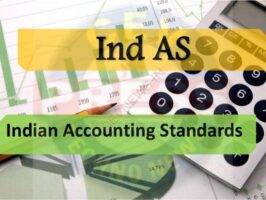BASICS OF FAIR VALUE IN IND AS
Basics of Fair Value in Ind AS (India)
Introduction to Fair Value
Fair value is a crucial concept in financial reporting, particularly under the Indian Accounting Standards (Ind AS). It represents the price that would be received to sell an asset or paid to transfer a liability in an orderly transaction between market participants at the measurement date.
Key Points
1. Definition of Fair Value
According to Ind AS 113, “Fair Value Measurement,” fair value is the price that would be received to sell an asset or paid to transfer a liability in an orderly transaction between market participants at the measurement date.
2. Fair Value Hierarchy
Ind AS 113 establishes a fair value hierarchy that categorizes inputs into three levels:
- Level 1: Quoted prices in active markets for identical assets or liabilities.
- Level 2: Inputs other than quoted prices included within Level 1 that are observable for the asset or liability, either directly or indirectly.
- Level 3: Unobservable inputs for the asset or liability.
3. Measurement Techniques
Ind AS 113 outlines three primary valuation techniques for measuring fair value:
- Market Approach: Uses prices and other relevant information generated by market transactions involving identical or comparable assets or liabilities.
- Cost Approach: Reflects the amount that would be required currently to replace the service capacity of an asset (current replacement cost).
- Income Approach: Converts future amounts (such as cash flows or income and expenses) to a single current (discounted) amount.
4. Application of Fair Value in Ind AS
Fair value is applied across various Ind AS standards, including:
- Ind AS 16 (Property, Plant, and Equipment): Revaluation model uses fair value.
- Ind AS 40 (Investment Property): Fair value model.
- Ind AS 109 (Financial Instruments): Measurement of financial assets and liabilities at fair value.

5. Disclosure Requirements
Entities are required to provide disclosures to help users understand the valuation techniques and inputs used to develop fair value measurements, including:
- The valuation techniques and inputs used.
- The effect of measurements using significant unobservable inputs (Level 3).
6. Challenges in Fair Value Measurement
- Market Volatility: Changes in market conditions can impact the reliability of fair value measurements.
- Subjectivity: Level 3 inputs can introduce subjectivity into valuations.
- Complexity: Applying the appropriate valuation techniques and inputs can be complex and require significant judgment.
7. Benefits of Fair Value Measurement
- Relevance: Provides relevant and timely information to users of financial statements.
- Transparency: Enhances transparency in financial reporting.
- Comparability: Improves comparability across entities and periods.
Fair value measurement under Ind AS plays a critical role in ensuring that financial statements provide a true and fair view of an entity’s financial position. Understanding the basics of fair value, its measurement techniques, and related challenges is essential for accurate and transparent financial reporting.


